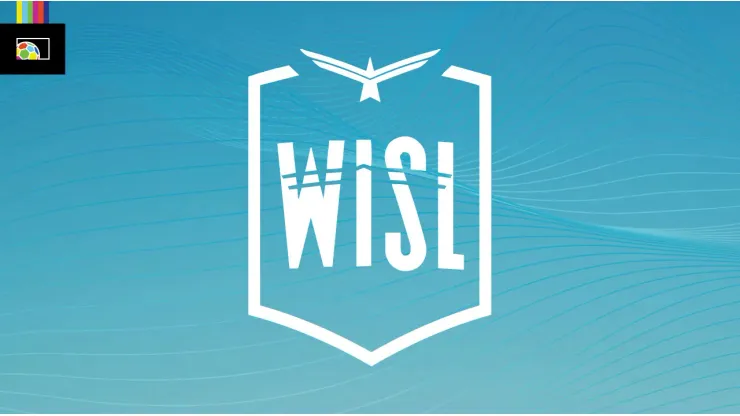The American women’s professional soccer league pyramid is set to expand with the 2024 launch of WISL. The Women’s Independent Soccer League (WISL) today announced that it has officially applied for Division II sanctioning with the US Soccer Federation (USSF).
Initially announced back in April of 2021, WISL (whimsically pronounced as “whistle”) has fallen off the radar since. The NISA-affiliated outfit originally intended to kick off in 2022, but that did not happen. The league is now targeting a 2024 inaugural season, with six participating clubs.
In the league’s application letter to the United States Soccer Federation, WISL managing director Lynn Berling-Manuel stated “WISL is conceived as a bridge between the uniquely American college game and the higher aspirations of literally thousands of soccer-passionate young women… We’re confident that the 2024 WISL season will provide the best professional women’s soccer league experience in the nation for independent clubs.”
Independent is a key word. Like its men’s league cousin, NISA, WISL plans to run with independent clubs as members of the league. This is as opposed to a franchise-based model, such as those used by MLS and NWSL. The league will charge annual membership fees rather than large upfront expansion fees. This lowers the barrier to entry significantly. However, NISA, which uses this model, has had struggles with retaining teams. Nine NISA clubs have either moved to another league or folded outright since kicking off in 2019.
Inaugural season to start with six clubs
While the six inaugural clubs have not been named, in 2021 one club was announced. The Los Angeles Force, who also have a NISA men’s side, were presented as the first WISL team. It is unclear at this time whether they remain on board. However the WISL application does reference strong ties with existing NISA organizations. As of September 2023, NISA currently consists of the aforementioned Force, plus Chattanooga FC, Savannah Clovers, Club de Lyon (FL), City Union (Rochester/Syracuse, NY), Albion San Diego, Michigan Stars, Gold Star Detroit, and Maryland Bobcats. Inactive and/or expansion clubs California United, Calabasas FC, Irvine Zeta, Valley United, and the New York Cosmos are listed as NISA members on the official league website. We can likely expect a healthy number of the initial WISL clubs to come from this stable of organizations.
Five additional WISL clubs are touted as already committed for the following 2025 season.
WISL fills out women’s league pyramid
This announcement by WISL comes on the heels of two other notable women’s pro soccer developments in 2023.
First was the announcement in February by the Women’s Premier Soccer League (a robust network of amateur clubs across the country) of WPSL Pro. WPSL Pro is planned to start in 2025 as a Division III professional league with 10 teams.
Then there was the somewhat shocking move by the USL Super League in May. Previously believed to be a D2 league, the USLSL announced it would be applying for Division I sanctioning, which would put it equal with the NWSL. That is in addition to planning on playing on the Fall-Spring, “European” calendar. USLSL plans to launch in August 2024 with eight teams – Carolina, Dallas, Lexington, Phoenix, Spokane, Tampa Bay, Tucson, and Washington, D.C. Chattanooga, Indianapolis, Jacksonville, Madison, and Oakland are listed as “2025+” clubs.
So, if all goes to plan, women’s pro soccer will expand dramatically in the USA in the next two years. We’ll go from one league of 12 teams in 2023, to four leagues with as many as 48 in 2025. And the gap will finally be bridged from college/amateur (WPSL, USLW), to D3 (WPSL Pro), D2 (WISL), and D1 (NWSL/USLSL).
There is certainly no shortage of American talent in the women’s game. And now there will be substantially more opportunities to play professionally in the USA. On the heels of the USWNT crashing out of the World Cup, this is a welcome lift to the American game.
While there’s no USA victory tour or a massive influx of hype to the club game this year – the expansion of the women’s pro game, including WISL, may well be the most impactful “post-World Cup bump” ever.
200+ Channels With Sports & News
- Starting price: $33/mo. for fubo Latino Package
- Watch Premier League, Women’s World Cup, Euro 2024 & Gold Cup
The New Home of MLS
- Price: $14.99/mo. for MLS Season Pass
- Watch every MLS game including playoffs & Leagues Cup
Many Sports & ESPN Originals
- Price: $10.99/mo. (or get ESPN+, Hulu & Disney+ for $14.99/mo.)
- Features Bundesliga, LaLiga, Championship, & FA Cup
2,000+ soccer games per year
- Price: $5.99/mo
- Features Champions League, Serie A, Europa League & Brasileirāo
175 Premier League Games & PL TV
- Starting price: $5.99/mo. for Peacock Premium
- Watch 175 exclusive EPL games per season






